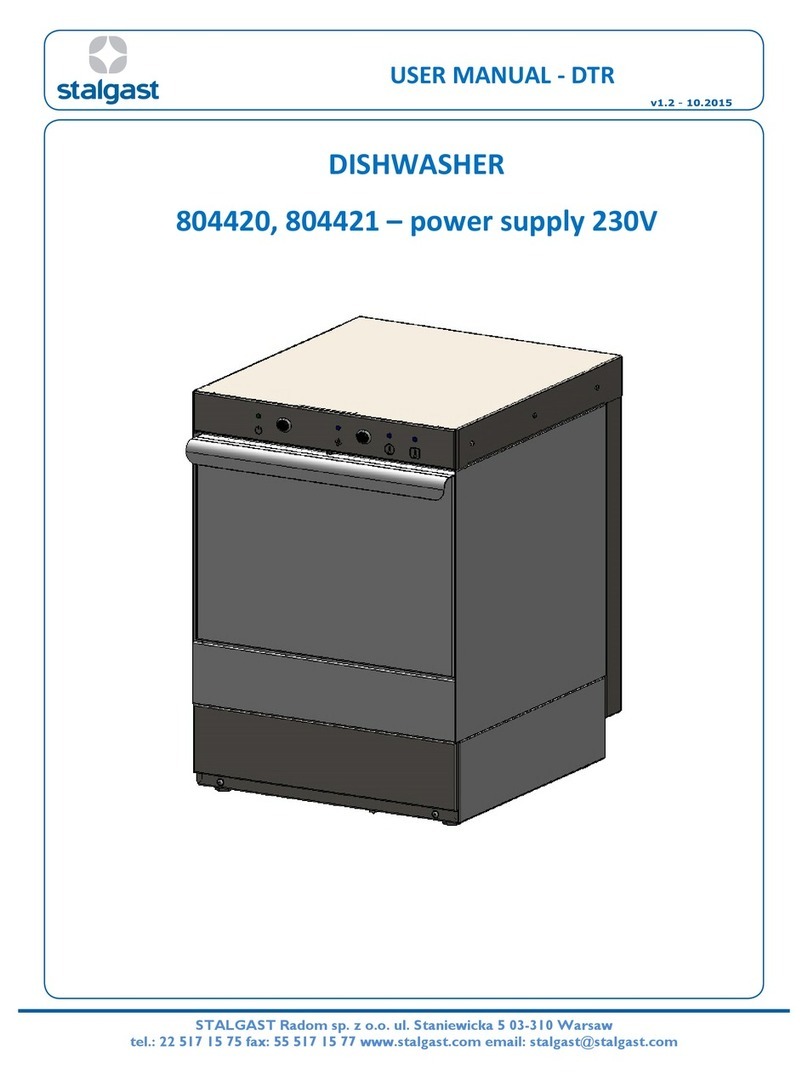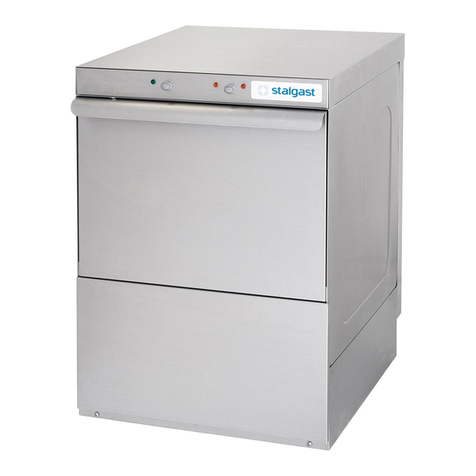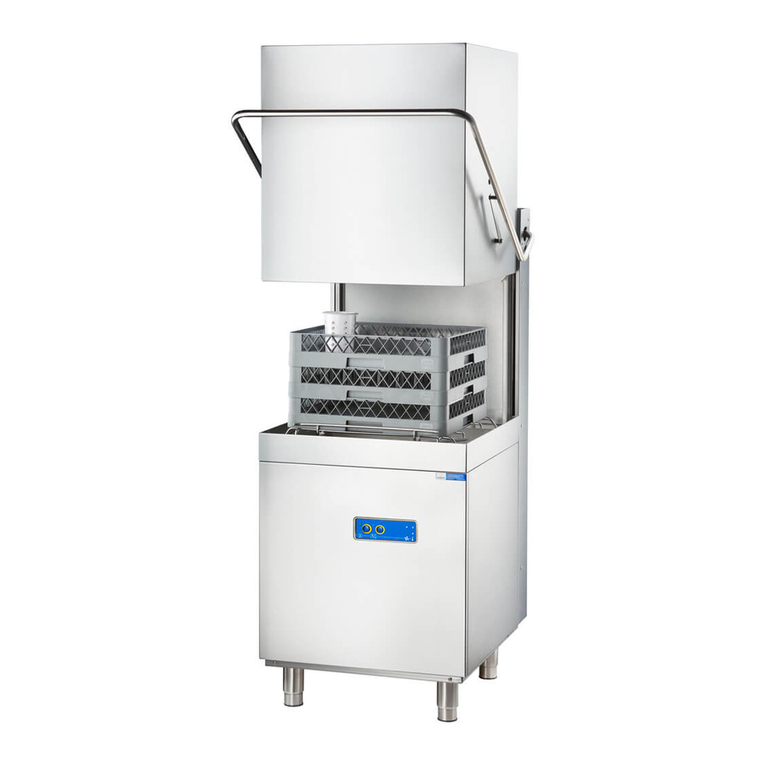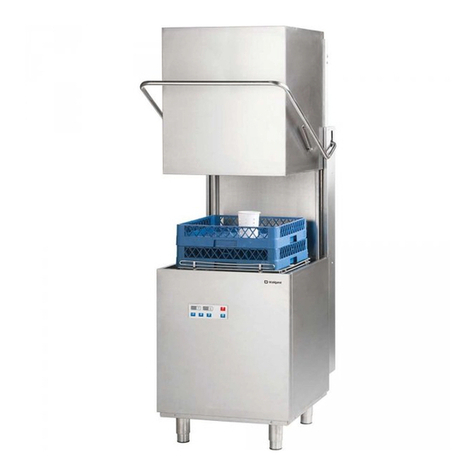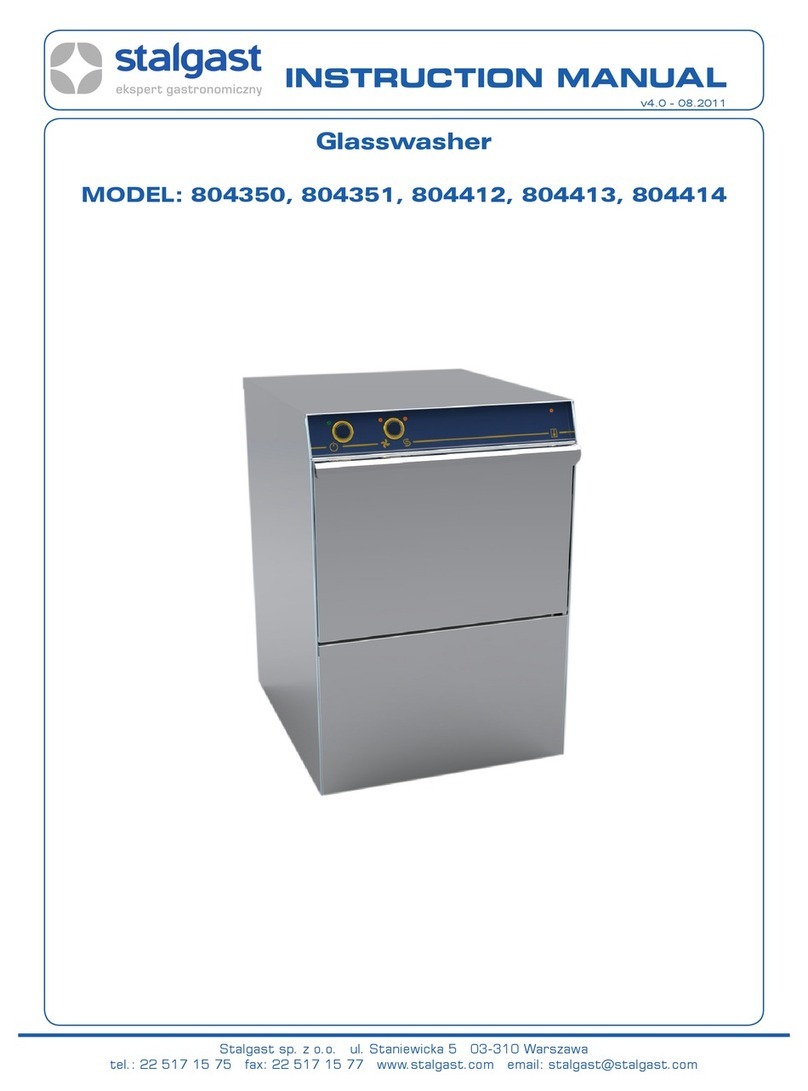
STALGAST Radom sp. z o.o. ul. Staniewicka 5 03-310 Warsaw
tel.: 22 517 15 75 fax.: 22 517 15 77 www.stalgast.com email: stalgast@stalgast.com
The appliance is fully disconnected from the power supply only when the main switch is set to OFF. The
appliance must be connected via the terminal placed in the rear, lower part of the appliance. Protective earth
(PE) is marked in yellow-green, neutral (N) in blue, and phase conductors (L1, L2, L3) in black, gray, and brown,
respectively.
II. Connecting the appliance to the water mains
Water hoses and the power cord are protruding from the rear. The water supply hose must be connected to a
3/4" outlet. The connection should be closed only with the use of a brand new hose. In order to observe
safety, water pressure should be between 2-4 bar. Should the pressure be higher, a pressure reducer should be
installed. The main valve should be installed above the hose feeding water into the appliance. The main valve
should be installed in an easily accessible place; therefore, it should not be installed behind the appliance.
The appliance is equipped with a drain pipe, which should be installed at floor level with the use of a vent.
Before starting the appliance, make sure that the supply and drain hoses are not bent, blocked or
otherwise damaged during installation.
III. Setting the appliance
The appliance must be delivered to the installation site, unpacked, and its condition should be checked. In case
of damage to the appliance or any of its components, the shipping company must be notified immediately.
Connections to the devices must conform to the standards in force at the installation site. The manufacturer is
not liable for any injury or damage to the product resulting from failure to comply with the standards in force
at the installation site. Before installing the appliance, make sure that the moisture-sensitive components are
properly protected against wetting, e.g.: during the washing of the appliance.
The appliance should be set at a desired location and then the protective packaging should be removed. The
appliance should be leveled using a spirit level and the four adjustable feet, thus ensuring stable operation. Any
other way of leveling the appliance should be approved by the manufacturer.
The packaging materials should be kept away from children and pets, as they can cause an accident. All
materials used to pack the product are environmentally friendly and can be safely stored in a suitable place.
Recyclable components are marked as follows:
•PE – polyethylene: external packaging components, manual jacket, fastening components;
•PP – polypropylene: grips;
•Wooden and cardboard components must be left in places intended for this purpose in accordance
with applicable law.
It is forbidden to store the appliance and its components directly in the environment.
IV. First start-up
Before starting the appliance, check the correct operation of the electronic safety system. The above steps
and the first start-up may only be done by technical service personnel, who will also conduct a short training in
the operation of the appliance Each appliance is equipped with an adjustable rinse aid dispenser. In contrast, the
adjustable washing liquid dispenser is only supplied with some models. A container for the washing liquid and
rinse aid must be put in place and then connected to suction tubes: the transparent one to the washing liquid,
and the blue one to the rinse aid. To adjust, use the adjustment screws shown in (Fig. 3 and 4). It is
recommended that adjustments be made by the staff of the company providing the rinse aid and washing liquid.
Before connecting the suction tubes, weights should be attached (to keep the tube at the bottom of the
container) and filters should be installed (Fig. 5).
Figure 3Figure 4Figure 5

